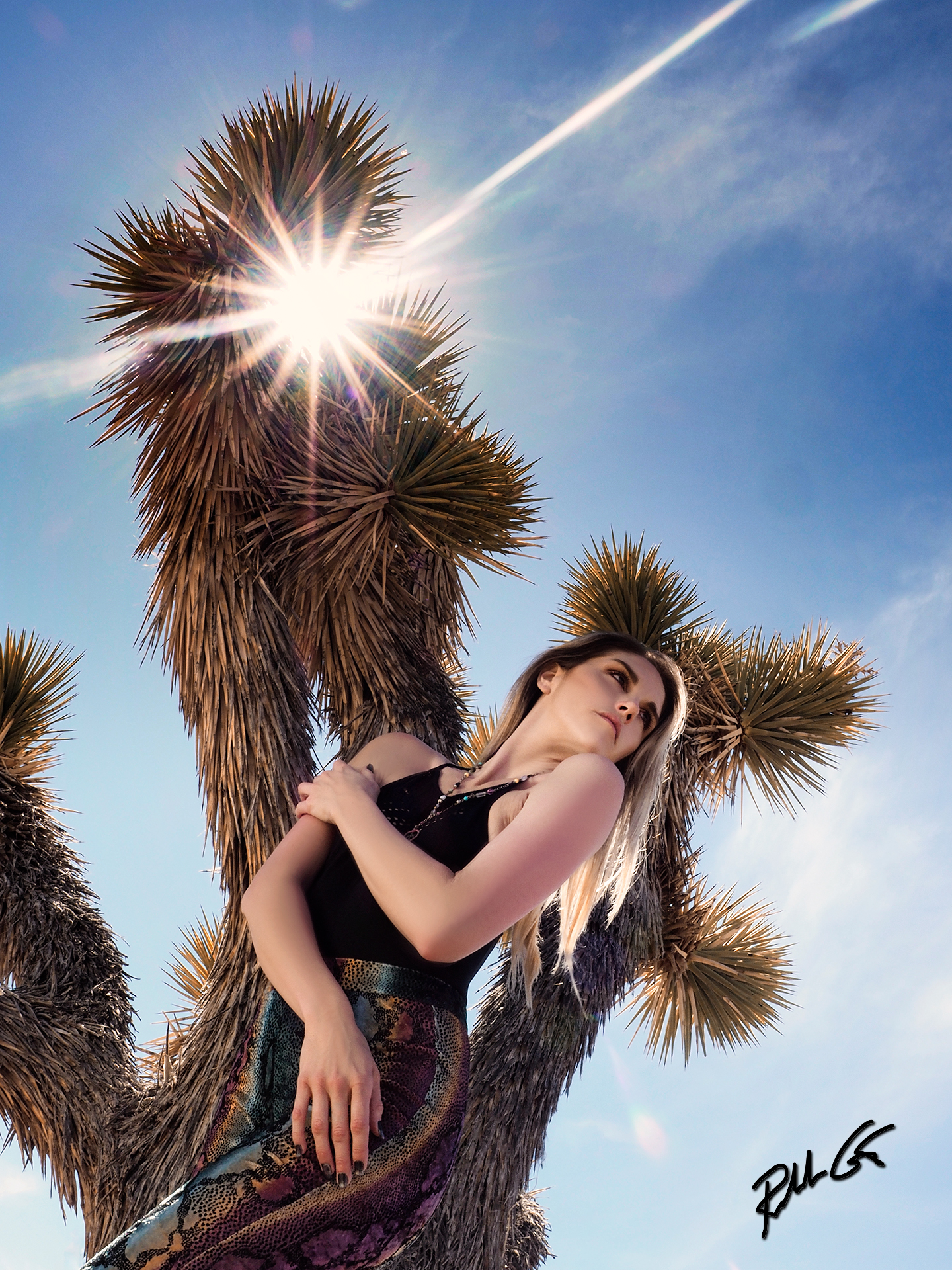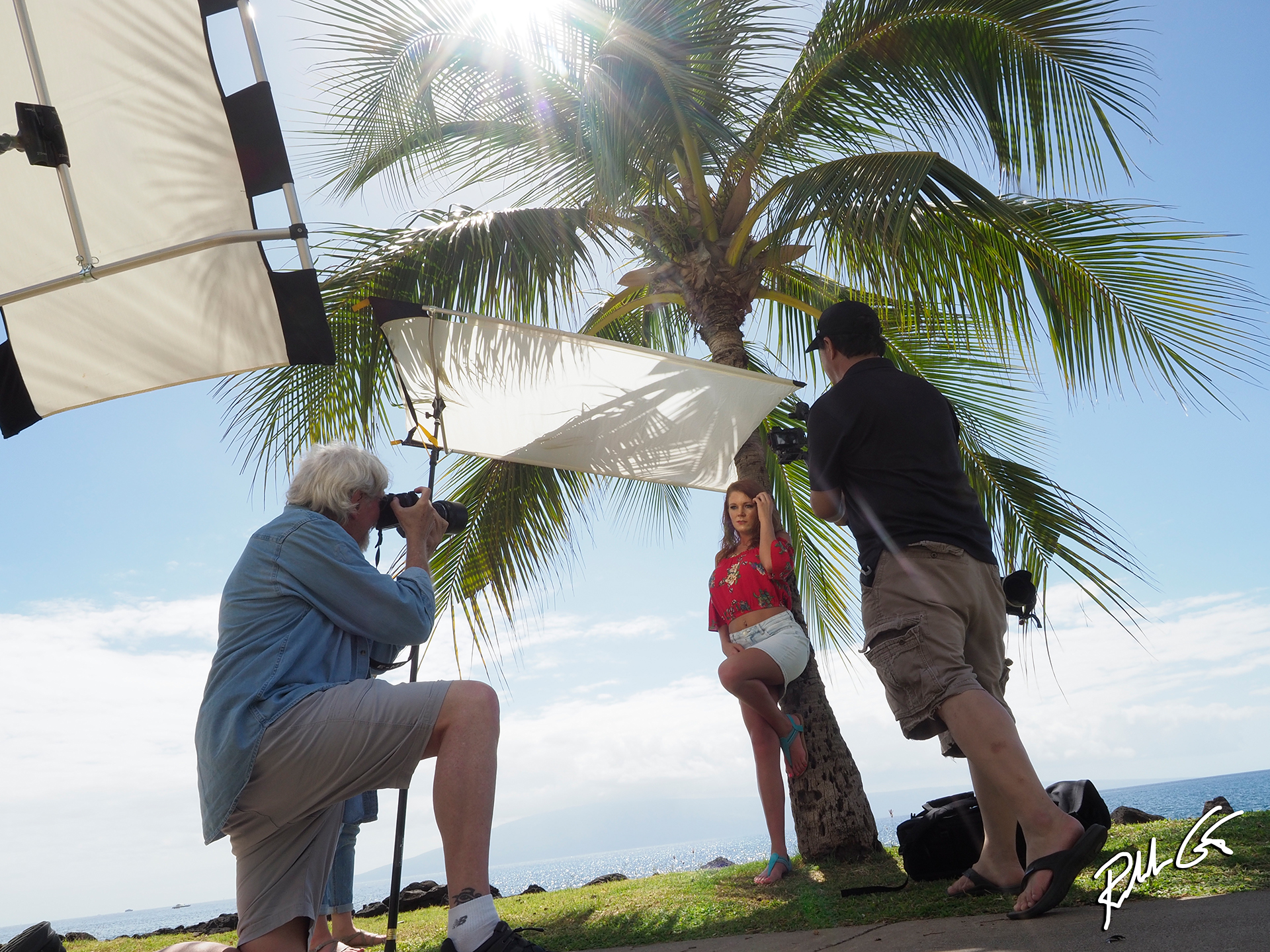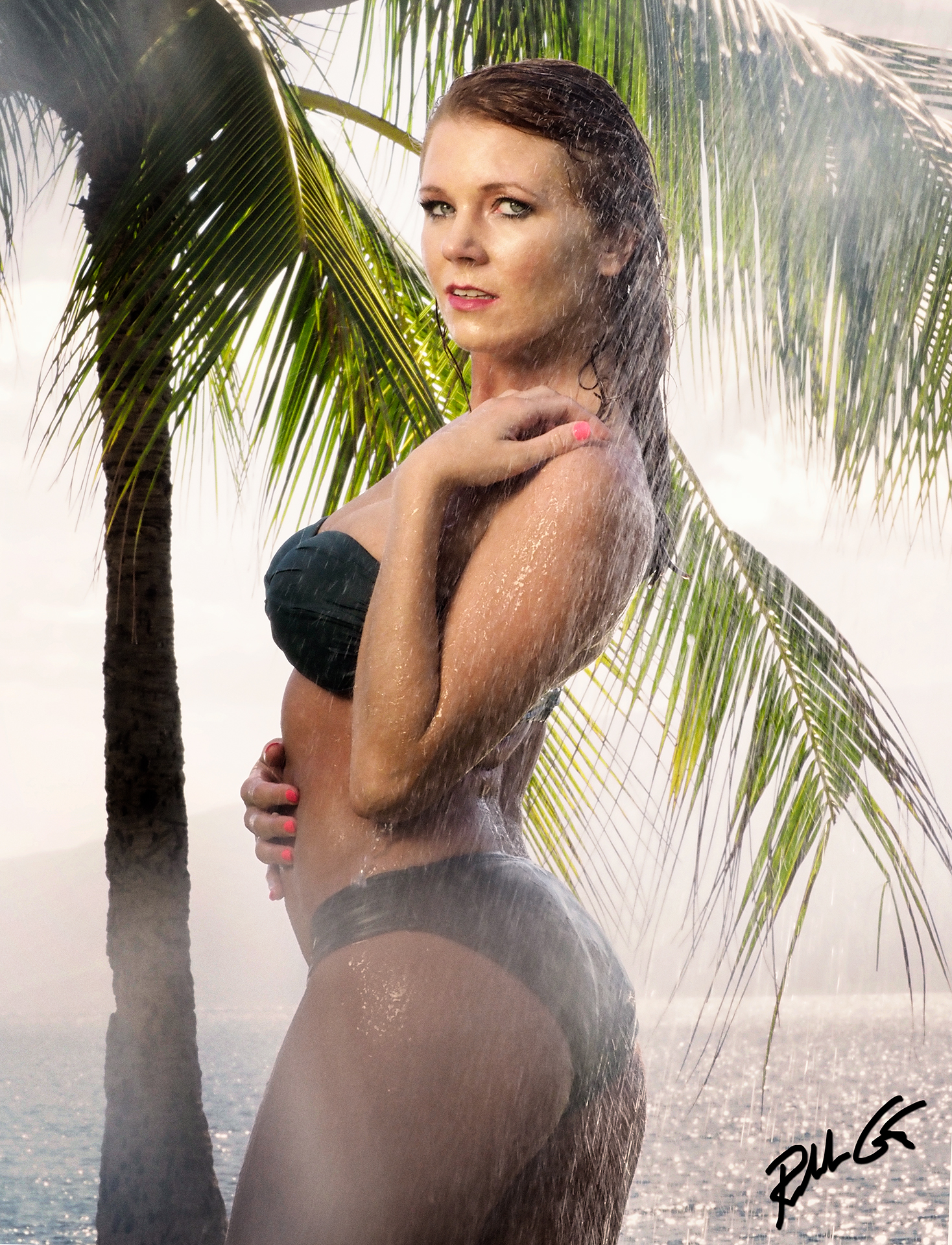Wikipedia states, “Lens flare refers to a phenomenon wherein light is scattered or flared in a lens system, often in response to a bright light, producing a sometimes, undesirable artifact within the image.” Notice the subtext, “sometimes, undesirable,” which translates to, “there is room to make camera lens flare a desirable elementin your photos.”

You can add a little “flair” into your photos with camera lens flair. Here the model is illuminated with a SUNBOUNCE MINI with a SUNBOUNCE Sparkling Sun reflector fabric.
Basically, when the sun sits directly behind your subject this can lead to camera lens flare depending on the sun position relative to camera position and you can use this to your advantage. Why make camera lens flare disappear with a lens hood or change your angle of capture to eliminate it altogether? Use the camera lens flare to your advantage to add a little flairto your photos!
Add Flair to Your Photos
Yes, your subject’s body can hide the sun behind them to eliminate any camera lens flare, but if you combine the camera lens flare with the beautiful backlight the sun provides, you can have highlights in your subject’s hair along with the camera lens flare to create dramatic impact in your photos. You can make your photography standout, however, there are a few things you must first consider:
- Never, never look directly into the sun especially through your camera lens, as mentioned in my previous article, Midday Sunlight Photography, this can cause serious eye injury and permanent damage to your eyes including blindness. Remember, always safety first, to you and your subject.
- Your camera lens aperture determines the type of lens flare. The higher the camera lens aperture value, or f/stop, the more distinct the flare becomes like that of a cross-screen filter type of lens flare that creates a multi-pointed star. The lower the aperture value on your lens, the more diffused the lens flare becomes and the potential of “spill light” onto your subject increases. In the end, it’s up to your personal photography style or tastes you intend to capture.
- When it comes to creative camera lens flare, use Your Nose for Great Photos. This photography tip, or technique, works great, but experiment with it as the placement of nose grease on your lens changes as you adjust your focus or with a zoom lens, when you zoom your camera lens in and out. Don’t hesitate to move your feet to ensure you’ve cropped your image correctly and as you adjust your focus, remember to turn the camera lens flare to your advantage.
- Your shooting position and camera position matters. Since every location and subject are different, as a photographer you have to move around, don’t get stuck on perfect horizontal or vertical camera positions. Change it up and observe what you see until you can find a more dramatic effect in your photos.
Invoke Drama
The idea behind camera lens flare is to invoke a sense of drama in your photos and to create realism in your photography, so don’t hesitate to get dirty—yes, lay down on the ground and shoot up onto your subject. A real photographer doesn’t worry about a little dust or dirt on their clothes because when it comes to the capture of a masterpiece photograph, the only thought in the photographer’s mind is to capture a great image.

Here the SUNBOUNCE Sun-Swatter diffuses the hard sun-light and helps eliminate or reduce camera lens flare. Photographer Mike Majewski photographs Kellie and she is illuminated with a SUNBOUNCE MINI with a SUNBOUNCE Sparkling Sun reflector fabric.
And don’t hesitate to change your camera lens, a wide-angle lens in this situation can create an interesting perspective to include lengthening your subject’s legs. Also, don’t settle for perfect horizontal or vertical images either, turn your camera, play around until you find the most appealing angle of view and composition.

You can incorporate “nose grease” with camera lens flare as in this photo of Kellie illuminated with a SUNBOUNCE MINI with a Sparkling Sun reflector fabric and shot with the SUNBOUNCE Sun-Swatter.
Camera Lens Flare Position
Normally most camera lens flares are positioned at the top of your image frame, rarely do you see it at the bottom or lower third of image, though it’s possible especially when you capture camera lens flare bouncing off water in a swimming pool, lake or even off the ocean.
But one thing to keep in mind, treat the camera lens flare like an additional main element and place it into your image frame according to the Rule of Thirds. If your subject’s eyes look to the left, place the camera lens flare to the right of the subject as though your subject eyes follow the rays of sunlight. Think of this as though you’re keeping the action in one direction.
Polygonal Chain
A camera lens flare often creates a polygonal shape or shapes in your image frame where its characteristics are based on the diaphragm, or aperture blades within the camera lens. Usually, the more expensive and higher-quality camera lenses have more aperture blades which provide for a more defined, or smooth camera lens flare. Sometimes this shape becomes another element in your image that can either distract or add impact to your photo.
Whether you add a camera lens flare polygonal shape or not, there is a high chance your image contrast will drop, and this is why it’s important to introduce fill light onto your subject. You can do this with either a fill-flash BOUNCE-WALL, or through bounced natural sunlight with photography reflectors like a SUNBOUNCER or SUN-MOVER.
Camera Lens Type
Camera lenses today come with an anti-reflective coating to reduce lens flare, but no camera lens is a 100-percent lens flare resistant because ultimately lens flare is caused by internal light reflections inside the lens created by the lens’ glass elements, hence the polygonal shape comes from light reflected off the lens aperture blades that originates off the lens glass elements itself.
If you purposely want to create camera lens flare, then you must keep in mind that prime lenses normally have less internal elements than zoom lenses. Zoom lenses with a larger difference between their minimum and maximum focal lengths will naturally have more internal glass elements, thus more reflective internal surface areas than a prime.
Ultimately, as a photographer you can choose to either eliminate an undesirable artifact within the image, or camera lens flare, by utilizing a lens hood or take the necessary steps to avoid the camera lens flare, or you can use it to your advantage to introduce a dramatic element in a potential masterpiece photo.



